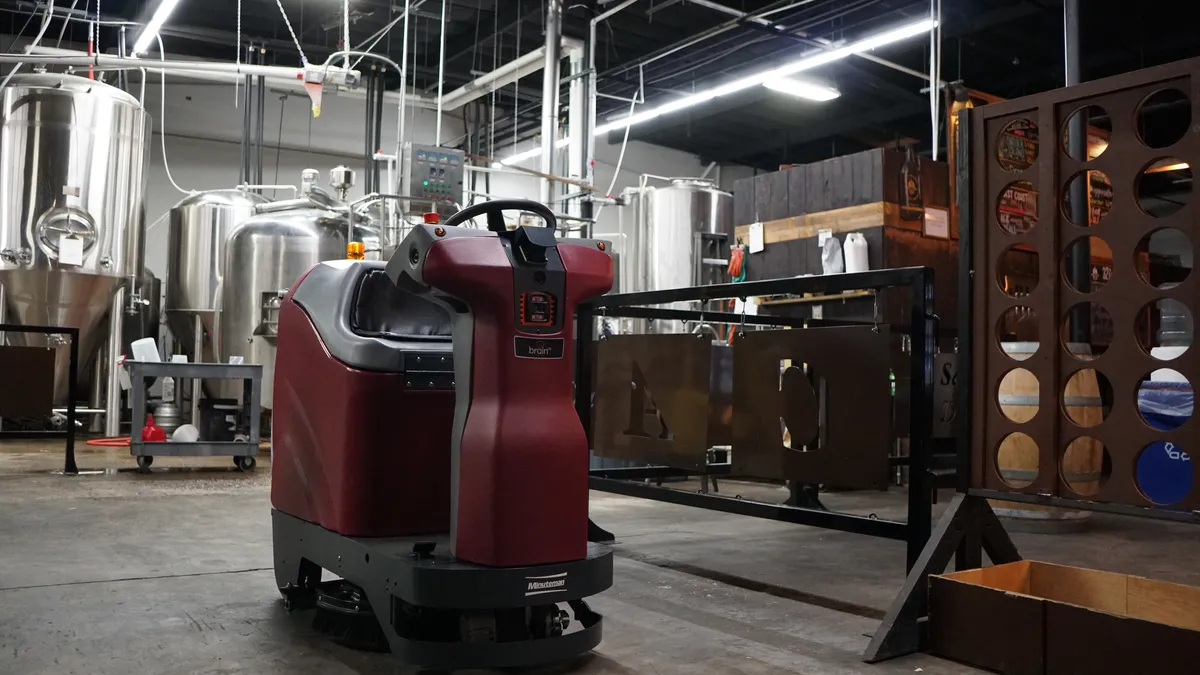Dive Brief:
- Beyond automation, robotics can provide a way to turn standard equipment into self-driving vehicles, according to a show-floor panel at MODEX 2018.
- The panel, titled, "Turning Ordinary Machines into Self-Driving Robots" and sponsored by artificial intelligence operating system (OS) provider Brain Corp, explored the benefits of using bolt-on robotics technology to drive efficiencies within facilities.
- Jack Hill, managing director at Minuteman International, said he partnered with Brain Corp to make a facility scrubber autonomous. The decision was customer-service driven, he said: "For every dollar our customer spends on an auto scrubber, or a sweeper, or an extractor, they spend nineteen dollars on labor."
Dive Insight:
The transformation of the modern facility may be most evident by the shift in how machines are used, and what that shift is doing to both company business models and employees' job descriptions.
Beyond the facility, those changes are in full-display at trade show exhibit halls. At MODEX 2018, an attendee could witness aisles-on-aisles of forklifts, pallets, conveyor belts and barcode scanners. Any conversation, however, is destined to reach a simple question: How easily can this be implemented within my current systems, workforce and production processes?
"The rate of acceptance is slightly different in each (market)," said Tom Marano, CEO of SecurAmerica, during the panel session. "In facility services we're involved in it now because our customers ... saying we need to know about this, we need to see how you're going to integrate this into your delivery service capability, and what's your longer-term strategy" to reduce cost and improve quality of service.
Robotics, the panel concurred, was a good way to do both. Automation has always been seen as a way to reduce labor cost, but using robotics to turn "ordinary machines into self-driving robots" can also improve other metrics, including quality, safety and workforce shortage reduction.
In addition, robotics-enabled machines can provide a company with valuable data. "Once you, then, have that data," Marano added, "you can take the combination of technology and human skills to provide better value to the customer."
There are new jobs that are being created: the robotic operator.

Jeremy Banta
Lead Faculty for Supply Chain Management, Columbus State Community College
"We probably have 40 machines in our product portfolio that could become autonomous," said Hill. But doing so, he said, does not mean labor will be displaced. "You're utilizing labor to do other things that they just couldn't get to before."
Jeremy Banta, lead faculty for supply chain management at Columbus State Community College, told Supply Chain Dive he agreed with the assessment and opportunity.
"We actually have a brand new degree program at Columbus State, called logistics engineering technology," Banta said. "There are new jobs that are being created: the robotic operator. There's a need — and we developed this from industry input — but there's a need for people to come into the facility that have some engineering background, know some IT, but understand supply chain. And this is why."
The comments point to three overlapping trends within supply chain management: the rise of cobots, Big Data and predictive analytics. Turning existing equipment into sensor-enabled robots can help give visibility within the facility and make better use of existing software upgrades within supply chains.
It's the advent of what MHI — the organizer of MODEX 2018 — calls the next generation supply chain.
It's also changing the way companies engage with each other, as more partnerships between equipment vendors, technology providers and facilities managers are required to make systems work together.
"When it comes to something like robotics, which is primarily software, we're a mid-sized company, we wouldn't even be able to begin developing our own version or own product," said Hill.














